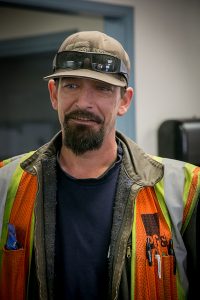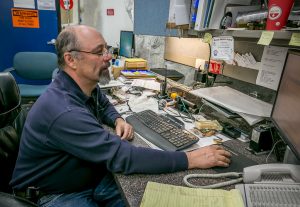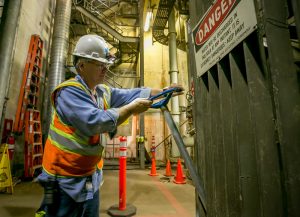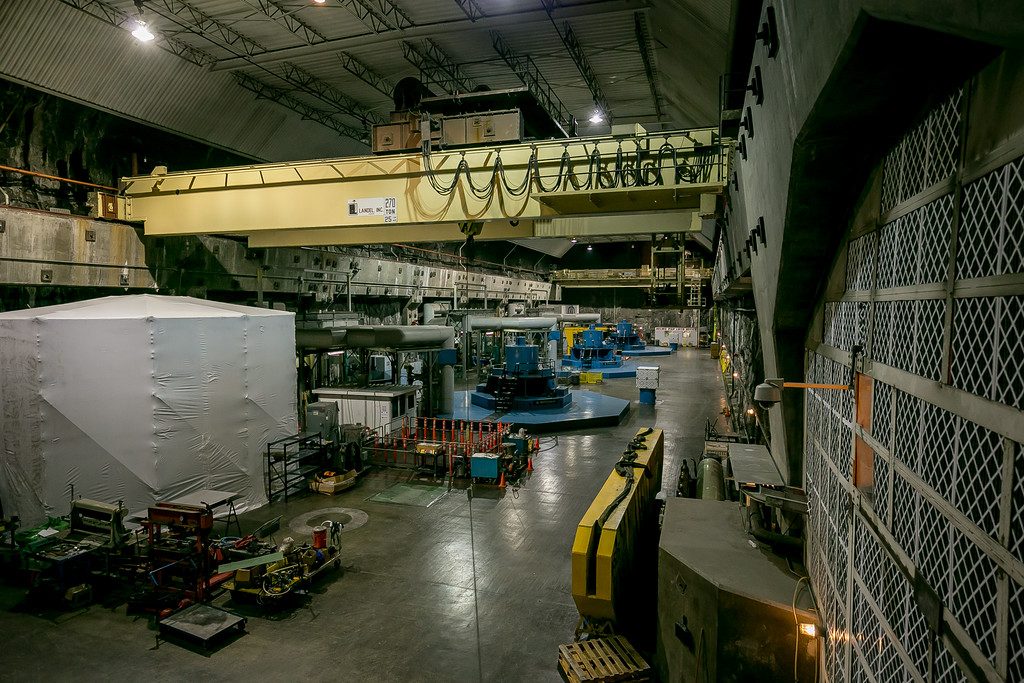Hydroelectric power is something that most people have heard about, but few are truly familiar with precisely how it works. To better understand this unique process, the Utility Reporter took a trip out to Helms Pumped Storage Plant to learn about hydro first-hand from the Local 1245 members who keep the plant running.
So how, exactly, does Helms work to generate hydroelectric power? 20-year IBEW member and GC Subforeman James McLaran provided a simplified explanation in layman’s terms.
“There’s a big mountain up here, with a big pool of water at the top, and gravity makes the water go downhill,” he said. “That water comes through a tunnel and spins these big turbines, and that’s what makes the power. And then it flows out into another body of water.”
Of course, the actual process is a bit more complex in nature, but McLaran’s description of the plant’s operation helps to provide a bit of context for the dynamic power generation process that takes place at Helms.
From Courtright to Wishon
Helms is considered to be one of the most exceptional hydroelectric facilities ever built, and is a key part of PG&E’s hydro network, which is the largest privately owned hydroelectric generation system in the country. The Plant, located about 1,000ft underground, is capable of generating 1,212 MW from its three 404 MW reversible Francis pump turbine-generators, which create enough electricity to power 900,000 homes.
During periods of peak energy demand, the water comes down from the Courtright Reservoir, which is located atop the mountain, over 8,000ft above sea level. It flows at a rate of 9,900 cubic feet per second, down through a 15,854-foot-long tunnel, and then splits into three pipes that each feed into one of the three turbine-generators. During this trip, the elevation drops over 1,700 feet, and the gravitational force of the water makes the turbines spin at a rate of 360 revolutions per minute.
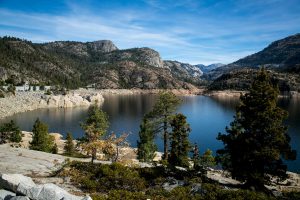
Water flows out to Lake Wishon after flowing through the generators, and is pumped back up to Courtright Reservoir at night
Once it passes through the generators, the water continues to travel another 3,800ft, and is deposited out into Lake Wishon. At night, when the energy demand is low, the generators shift into reverse in order to pump the water from Wishon back up to Courtright, so that the whole process can start over again. Helms relies on energy from Diablo Canyon to power the pumps during the reverse cycle at night, but the amount of power generated when the water flows down during the day more than compensates for the power used at night, making the plant both environmentally friendly and economical.
Working and Living at Helms
Helms is located deep in the Sierra Nevada, about 50 miles east of Fresno. The area is remote and difficult to get to, particularly during the winter months, when the snow covers the access roads and they become precarious to traverse. For this reason, the majority of the workers sleep, eat and reside at Helms Headquarters, which is located just down the road from the powerhouse. At HQ, the workers have access to offices, residences, a cafeteria, a rec room, meeting rooms and just about everything that they might need.
Only a couple dozen employees work at the plant full-time, and a handful of other crews will come in as needed to handle special projects and maintenance. Since the team at Helms is small, most of the workers find themselves doing a wide variety of different work tasks on any given day, depending on what needs to get done.
“I do everything,” Utility Worker Robert Sharette, who has been working at Helms for 33 years, said when asked about what his job entails. “We work on the units, we work on the houses, we work on the dams, whatever they need us to do. Today, we’re running down to Fresno to get some materials and pick up some trucks that broke down and needed to be repaired.”
There’s no question that working at Helms means wearing many different hats.
“There are days when we all need to be helpers, and there are days when we all need to be technicians,” said Technical Crew Lead David Lipe, who has been working at Helms for 24 years. “It’s always a group effort, and that’s one of the nice things about being here. We’re very dependent on one another, and we all have to perform. It’s a good experience.”
Always a Challenge
Like most generating stations, maintenance is a large part of the work that goes on each day. From repairs to the turbines, to patching up periodic leaks and ensuring that everything is running as it should, the team at Helms stays quite busy, and they never quite know what each day will bring, but they have the expertise and confidence to handle every task with relative ease.
“The blessing is, there’s always a challenge. But the curse is, there’s always a challenge!” said Lipe. “Most of the time, there’s more to do than there’s time to do it, though I think we see that everywhere nowadays. But it’s a great job. I like our remote location, and I like that we’ve got a really small crew. It’s like a family.”
Photos by John Storey
